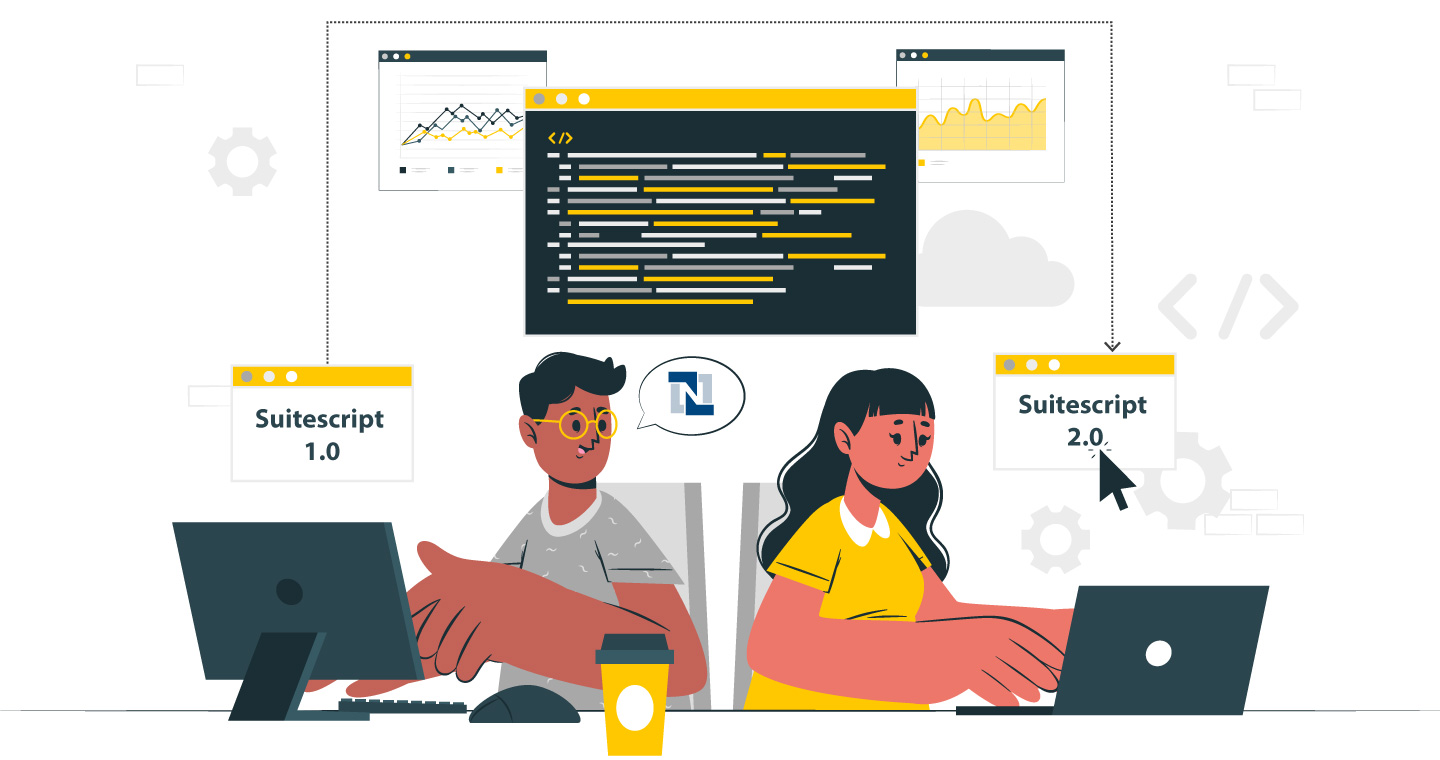The manufacturing industry in 2025 is more dynamic than ever, with businesses under constant pressure to improve efficiency, maintain visibility across operations, and embrace automation to stay ahead. In fact, traditional tools and manual processes are no longer enough to manage the complexity of modern production. All thanks to advanced ERP systems that empower manufacturers with smarter planning, streamlined workflows, and real-time insights.
As per the research, 70% of manufacturers will rely on ERP systems for end-to-end production visibility by the end of 2025.
Among these solutions, NetSuite Manufacturing Work Orders stand out as a powerful tool that helps businesses organize, track, and control every stage of production with accuracy and confidence.
This blog will act as a complete guide to understanding NetSuite Manufacturing Work Orders, including their key features, benefits, and future-ready capabilities.
What are NetSuite Manufacturing Work Orders?
NetSuite Manufacturing Work Orders is a powerful yet easy-to-use feature in the Oracle NetSuite ERP suite to manage the process of building products from raw materials or components. It is also known as the Work Order and Assembly module. It enables the businesses to clearly define assembly items and handle complex, multi-level Bills of Materials (BOMs), create and manage work orders, record assembly builds, and automatically backflush component inventory with minimal effort. In simple terms, work orders act as a guide for the manufacturing process to make it easier to track production, manage inventory, and ensure that finished goods are built correctly and on time.
Know More: NetSuite for Manufacturing Industry
Types of Work Orders in NetSuite
NetSuite supports different types of work orders to suit various manufacturing needs. In fact, each type helps businesses manage production more effectively depending on whether they are building for stock, managing costs in progress, or fulfilling custom requirements.
- Standard Work Orders
Standard work orders are the most common type used for building products based on demand or to replenish inventory. They define the assembly item, quantity, and required components, and are tracked from creation through completion.
- Work Orders with Work in Process (WIP)
WIP work orders are used when businesses want to track costs such as labor, materials, and overhead while the product is still being built. This type provides better visibility into ongoing production and allows reconciliation of variances at the end of the process.
- Special Orders (Custom/Bespoke Builds)
Special orders are work orders created to fulfill unique customer requests or customized products. These orders ensure that the build process is aligned with specific requirements rather than standard stock production.
Key Features of NetSuite Manufacturing Work Orders
NetSuite Manufacturing Work Orders include powerful features that simplify production, improve accuracy, and give manufacturers better control over their processes.
- Assemblies and Multi-Level BOMs
NetSuite allows businesses to manage assemblies with multiple subcomponents, build and unbuild assemblies, and track both finished goods and the components used.
- Work Order Management
Users can create and manage production or special order workflows to replenish inventory levels or meet specific customer requirements.
- Discrete Manufacturing Options
The system supports complex production processes by letting businesses issue and track materials, record labor, backflush components, and manage labor through routing tickets.
- Batch Processing
Each batch is processed and tracked individually with full lot traceability, recipe and formulation management, and FIFO material issuance.
- Shop Floor Controls
Manufacturers can prioritize and track production orders directly from the shop floor while receiving real-time updates through tablet-based interfaces.
- Transfer Order Management
NetSuite makes it easy to transfer inventory across multiple locations so that materials are available at the right site for assembly.
- Automated Backflushing
The system automatically deducts the materials used in production from inventory which reduces manual work and prevents errors.
- Real-Time Costing Insights
Businesses can capture labor, material and overhead costs in real time to monitor efficiency and make better financial decisions.
- Lean Manufacturing Support
Production can be aligned with demand, material usage can be tracked, and waste can be reduced to support lean and sustainable manufacturing practices.
Steps in the NetSuite Manufacturing Work Order Process
The NetSuite Manufacturing Work Order process ensures that production is carried out in a structured way, from planning to completion.
Step 1: Create a Work Order
The process begins by creating a work order to define the product to be built and the components to be used. In NetSuite, you navigate to Transactions > Manufacturing > Enter Work Orders, select the assembly item to be produced, and enter the required quantity. The system automatically lists the needed components based on the Bill of Materials (BOM). After reviewing the details and setting the work order date, you save the order to initiate production.
Step 2: Build the Work Order
Once the work order is created, the next step is to build it. This is done through Transactions > Manufacturing > Build Work Orders where you can filter and select specific orders. When submitted, NetSuite automatically consumes the raw materials from inventory and creates the finished assembly to ensure accurate tracking of material usage.
Step 3: Complete the Work Order
After the assembly is built, the work order must be completed to update inventory. You can complete work orders individually by opening the order and selecting Enter Completion, or complete them in bulk from the Work Order List page. This step moves the finished goods into inventory and marks the order as fulfilled.
Step 4: Close the Work Order (for WIP)
If your business uses the Work In Process (WIP) feature, one final step is required, i.e., closing the work order. This is done by navigating to Transactions > Manufacturing > Close Work Orders. In fact, closing the work order reconciles any cost variances, finalizes accounting records, and locks in the production costs for the completed assembly.
NetSuite Manufacturing Work Orders Benefits
NetSuite Manufacturing Work Orders provide clear benefits that enhance efficiency, improve decision-making, and strengthen overall production control.
- Real-Time Communication
The system enables two-way communication between planners and shop floor staff by sharing standardized work instructions and real-time costing.
- Defined Manufacturing Process
Manufacturers can calculate the exact resources, time, and costs needed for production to ensure accuracy and reduce uncertainty.
- Increased Operational Efficiency
Production schedules can be planned around material availability which minimizes delays and increases output.
- Faster Implementation
Businesses can configure and use the system quickly to allow them to start seeing results in just a few days.
- Accurate Cost Tracking
NetSuite tracks production costs in real time to help businesses stay profitable and make proactive adjustments.
- Flexibility in Operations
The system supports different manufacturing styles, including processes that do not require formal work orders.
- Leaner Production Workflows
Manufacturers can align production with demand, minimize waste, and increase sustainability in their operations.
Also Read: NetSuite: The Answer For All Manufacturing Complexities in 2025
2025 Trends of NetSuite Manufacturing Work Orders
NetSuite is keeping pace with the latest manufacturing trends by introducing advanced capabilities that focus on automation, intelligence, and real-time visibility. These updates for 2025 help businesses improve efficiency, reduce errors, and make smarter decisions.
- AI-Powered Production Planning and Predictive Analytics
NetSuite uses artificial intelligence to forecast customer demand, optimize production schedules and provide predictive insights that reduce downtime and material waste.
- IoT and Machine Data Integration
With IoT integration, NetSuite can now connect to machines and devices on the shop floor. This allows for real-time monitoring of equipment performance and production activity.
- Enhanced WIP Tracking and Real-Time Dashboards
Work-in-progress can be tracked more accurately with real-time dashboards that display production stages, resource utilization and potential bottlenecks.
- Automation of Approvals and Workflows
Routine approvals and workflow steps are now automated within NetSuite, which reduces manual effort, shortens production cycles, and ensures greater compliance.
- Integration with NetSuite SuiteAnalytics
Manufacturers can use SuiteAnalytics to gain deeper insights through advanced reporting and interactive dashboards that track costs, performance, and production trends.

Conclusion
Manufacturing success today is not just about keeping up with production schedules. But it is about being ready for change, making faster decisions, and using technology to stay ahead of the competition. NetSuite Manufacturing Work Orders give manufacturers the agility to respond to demand shifts, control costs in real time, and scale processes without complexity.
VNMT Solutions not only delivers NetSuite implementations but also partners with manufacturers to transform the way they operate. Our team brings deep industry expertise, advanced customization skills, and a commitment to solving real business challenges rather than offering one-size-fits-all solutions.
Join our upcoming webinar to learn practical strategies and see how NetSuite can transform your manufacturing workflows.
Follow VNMT Solutions on LinkedIn for expert insights, case studies, and the latest NetSuite updates.
















